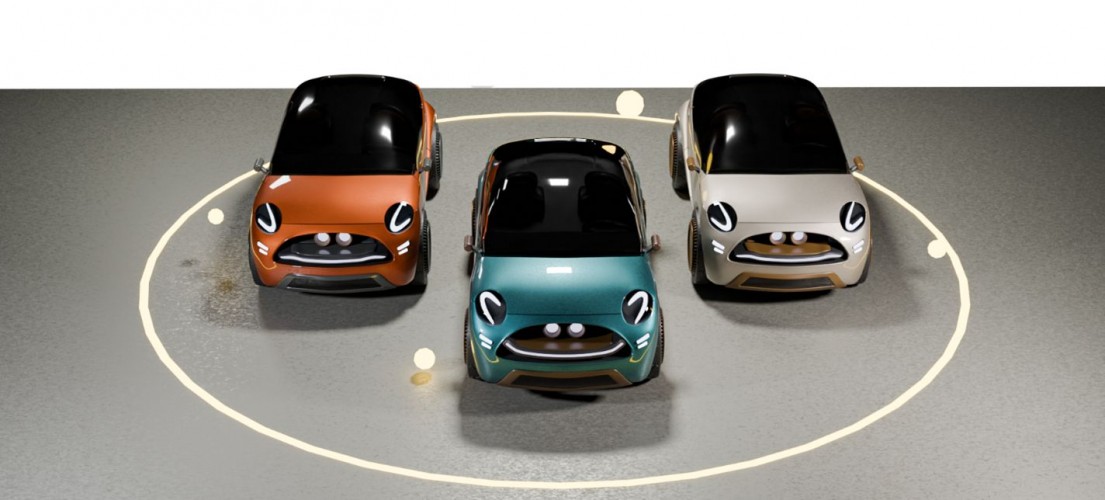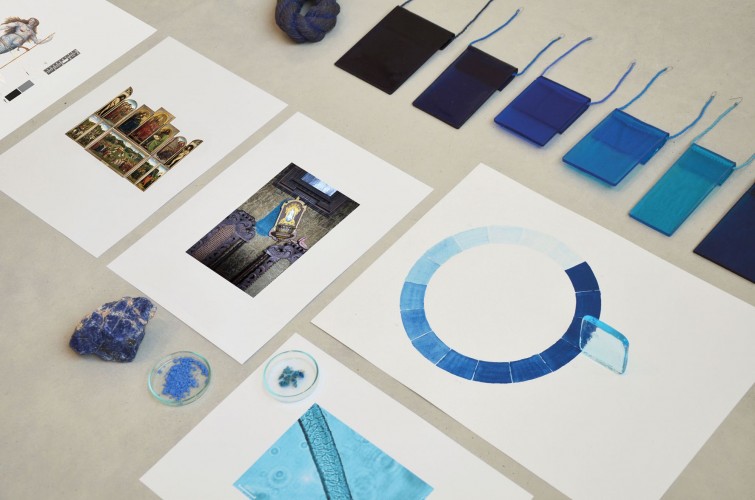Το σκουπίδι στην τέχνη και το design: Μια πορεία στον χρόνο
DS.WRITER:
Σοφία Θρουβάλα
Η ολοένα και αυξανόμενη καθημερινή κατανάλωση και απόρριψη προϊόντων έχει φτάσει τον πλανήτη σε μια κατάσταση έκτακτης ανάγκης. Τα τελευταία χρόνια, τόσο οι κυβερνήσεις όσο και τα άτομα μεμονωμένα έχουν αρχίσει να αντιλαμβάνονται το πόσο κακό προκαλούμε επί αιώνες στη Γη, και γίνεται μια προσπάθεια ευαισθητοποίησης για την ελαχιστοποίηση τόσο της κατανάλωσης προϊόντων που περιέχουν υλικά μη φιλικά προς το περιβάλλον, όσο και της κατανάλωσης κρέατος και ζωικών παραγώγων. Επιπλέον, προτείνεται, ή ακόμα και επιβάλλεται, η αντικατάσταση του πλαστικού από βιοδιασπώμενες, φιλικές προς το περιβάλλον λύσεις, προκειμένου να γλιτώσουμε τόσο την περαιτέρω μόλυνση των υδάτων, της ατμόσφαιρας και του διαστήματος, όσο και την επερχόμενη αύξηση της θερμοκρασίας.
Το περιβαλλοντολογικό ζήτημα ήταν και είναι κάτι που αφορά και τους καλλιτέχνες και σχεδιαστές, από τις αρχές του περασμένου αιώνα, με την επανάχρηση βιομηχανικών ή ακόμα και ζωικών (και ανθρώπινης προέλευσης) παραγώγων. Ως αρχή της επανάχρησης αντικειμένων μπορεί να θεωρηθεί η δεκαετία του 1910, με την εμφάνιση των Readymades στη Γαλλία. Τα έργα που εντάσσονται σε αυτή την περίοδο, ήταν εν μέρει ή εξ ολοκλήρου φτιαγμένα από τη σύνθεση υπαρχόντων αντικειμένων, κυρίως βιομηχανικά κατασκευασμένων. Η ανανοηματοδότηση των αντικειμένων αυτών σε μια νέα φόρμα ασκούσε έντονη κριτική στους καλλιτεχνικούς θεσμούς και τις θεωρίες περί ωραίου, ενώ παράλληλα έχουμε μια πρώτη σαφή αναφορά στη βιομηχανία σε μελλοντικό και παρόντα χρόνο.
Η έκθεση των ready made στο μουσείο, χώρο που φιλοξενεί και αναδεικνύει τον πολιτισμό, συμπεριλαμβάνει για πρώτη φορά εκθέματα που παρουσιάζουν το σκουπίδι ως κατάλοιπο της μεταβιομηχανικής κατάστασης, εξισώνοντάς το με κλασικά εκθέματα. Η κίνηση αυτή, βαθιά ριζοσπαστική, με την αυτοκριτική της και τον αυτοσαρκασμό θέτει νέες βάσεις για την αντιμετώπιση της τέχνης ως βιομηχανικού παράγωγου και καταναλώσιμου αγαθού, και ζητά ανοιχτά τη δημιουργία ενός διαλόγου πέραν του αισθητικού και του ορατού. Ο πρώτος καλλιτέχνης που εκθέτει ένα ready-made έργο είναι ο Marcel Duchamp με τον “Ουρητήρα/Fountain” το 1917, και ακολουθούν πολλά, όπως το πλέον διάσημο “Κεφάλι Ταύρου” του Πικάσο, αρκετές δεκαετίες αργότερα, το 1942. (εικ.2)
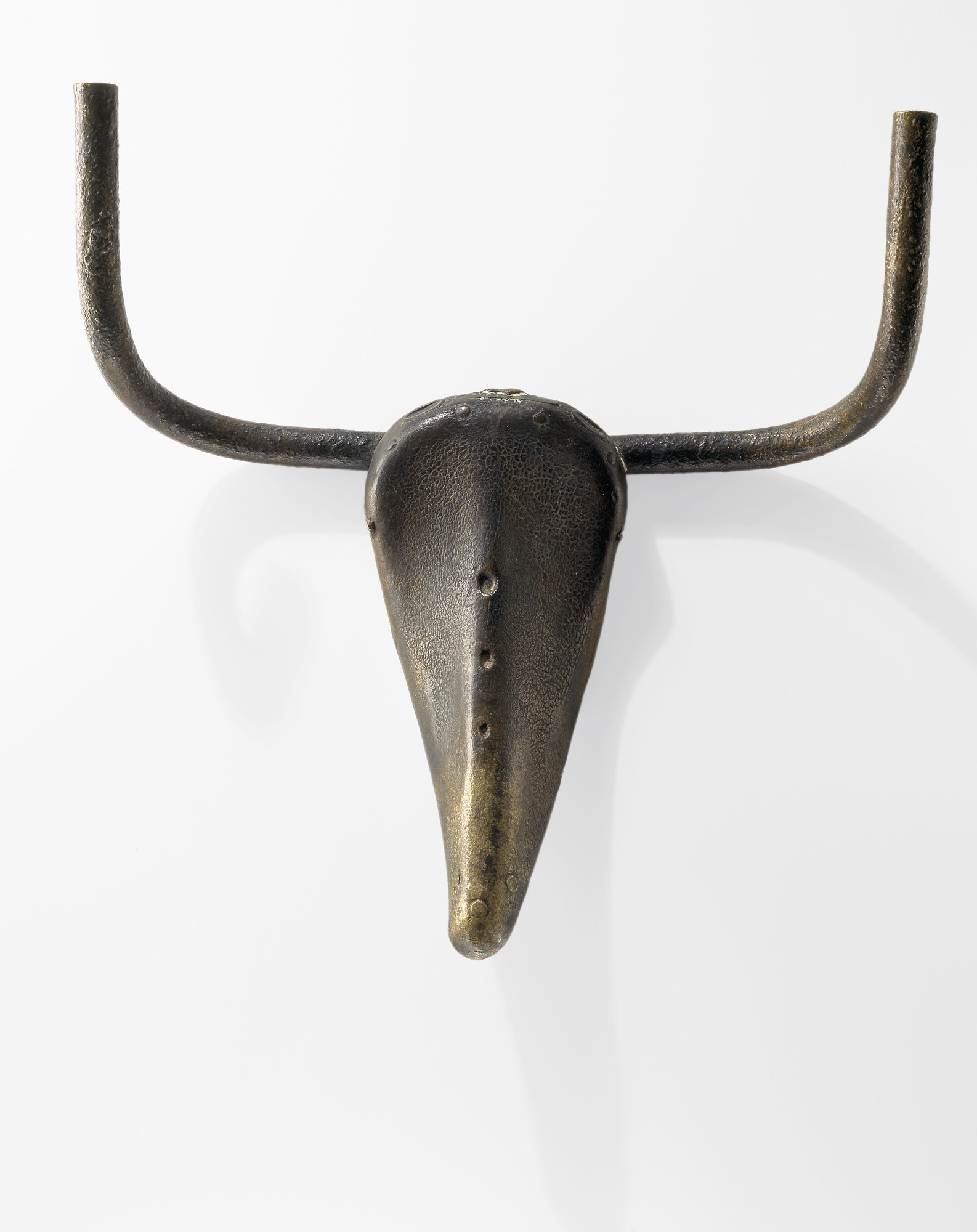
Eικόνα 1: Ανεστραμμένος Ουρητήρας, Marcel Duchamp, 1917 | Πηγή εικόνας: phaidon.com
Eικόνα 2: Κεφάλι Ταύρου, Pablo Picasso, 1942 | Πηγή εικόνας: moma.org
Στο δεύτερο μισό του 20ού αιώνα, η ανάγκη για αναφορά στην κοινωνική κατάπτωση είναι δεδομένη στην τέχνη. Μετά από δύο παγκοσμίους πολέμους, με πολλαπλά πλήγματα σε όλους τους τομείς, και με την παράδοξη αν και αναμενόμενη αύξηση της βιομηχανικής παραγωγής, οι καλλιτέχνες δημιουργούν “σώματα”, κινήματα και ομάδες, εντός των οποίων σχολιάζουν κριτικά τα τεκταινόμενα, εντάσσοντας στη δουλειά τους και το περιβαλλοντικό ζήτημα πάλι, μέσω της επανάχρησης ως άμεσης αναφοράς σε αυτό. Η Arte Povera, κίνημα που άνθισε τη δεκαετία του ’60 κυρίως στην Ιταλία, χρησιμοποίησε τη μέθοδο της αναπλαισίωσης των ανθρώπινων καταλοίπων και απορριμμάτων, με στόχο την άμεση αναφορά σε κοινωνικά ζητήματα όπως η φτώχεια, η κακή διαχείριση του πλούτου, η αστυφιλία, η υπερκατανάλωση, και γενικότερα επιχείρησε μια σύγκριση της προβιομηχανικής εποχής με την εποχή του υπερκαταναλωτισμού. Χαρακτηριστικοί εκπρόσωποι είναι ο Γιάννης Κουνέλης, ο οποίος μεταξύ άλλων εκθέτει πραγματικά τα πάντα, από άλογα σε μια γκαλερί μέχρι και αυτούσιες Γκαραζόπορτες καταστημάτων (εικ.3), ο Piero Manzoni, ο οποίος εκθέτει το διάσημο έργο “merda d’artista”, δηλαδή κονσέρβες οι οποίες εμπεριέχουν -ή θεωρείται ότι περιέχουν- κενώσεις του ίδιου του καλλιτέχνη (εικ. 4), ενώ, τέλος, σημαντική είναι η αναφορά τού Michelangelo Pistoletto, ο οποίος παρήγαγε έργα εμβληματικά της κριτικής στον καταναλωτισμό και στις βιομηχανίες μόδας, όπως το Venus of the Rags του 1967 (εικ.5).
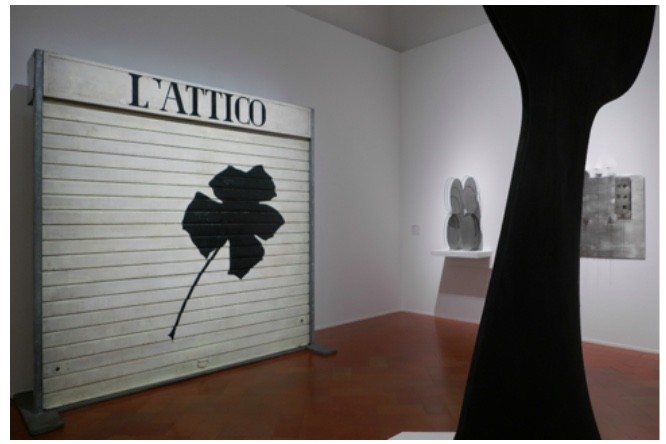
Εικόνα 3: Γκαραζόπορτα Καταστήματος, Yiannis Kounellis | Πηγή εικόνας: traveldreams.it
.jpeg)
Εικόνα 4: Merda d’artista, Piero Manzoni, 1969 | Πηγή εικόνας: artribune.com
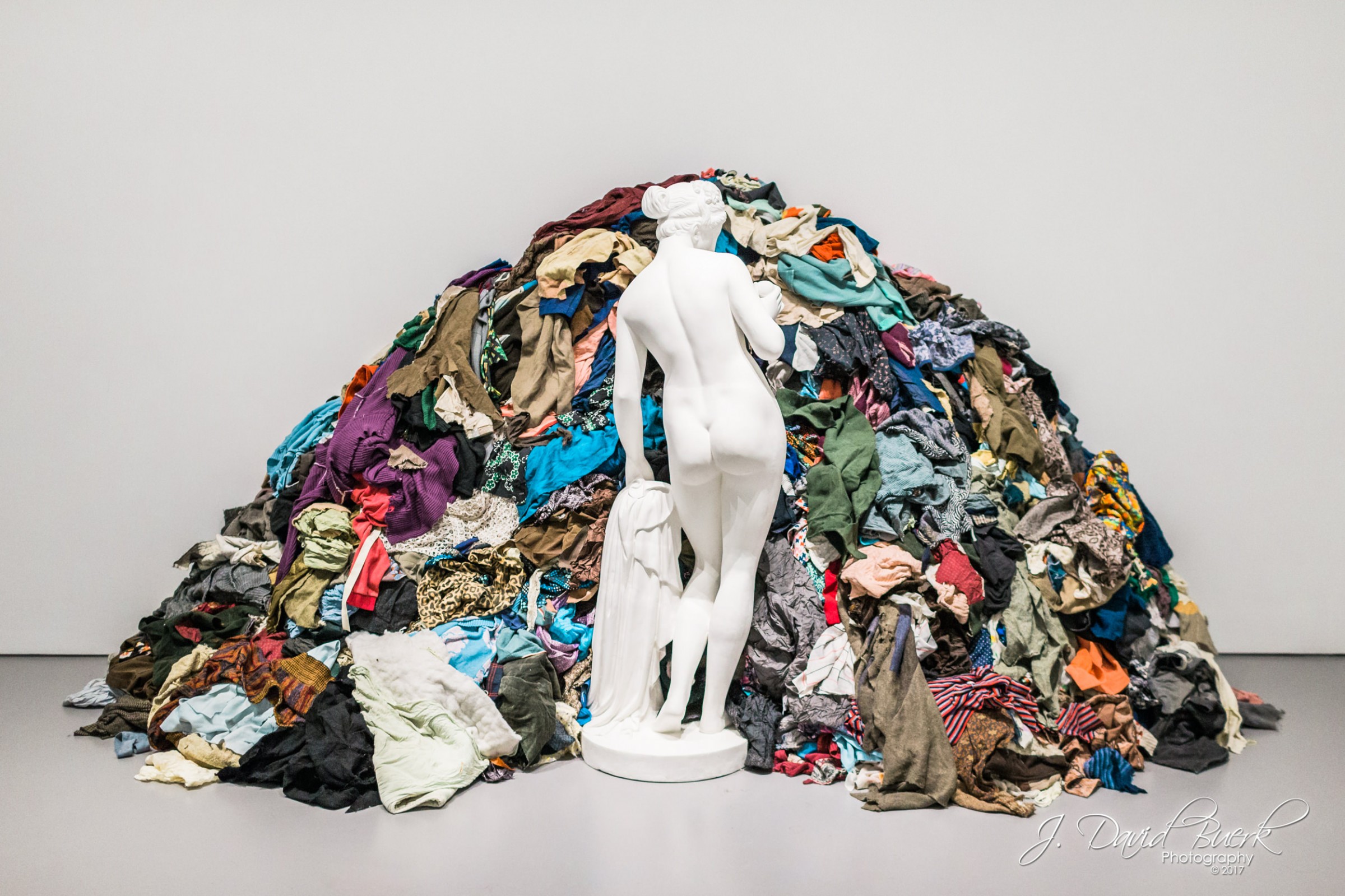
Εικόνα 5: Venus of the Rags, Michelangelo Pistoletto,1967 | Πηγή εικόνας: jdavidbuerk.com
Την ίδια δεκαετία, καλλιτέχνες που εντάσσονται στην Junk Art και στον New Realism δημιουργούν ανεικονικά έργα, αποστασιοποιημένοι από τις αναφορές στον φορμαλισμό ή στο κλασικό ως αντίπαλο δέος της τέχνης τού σήμερα, στοιχεία που υπάρχουν σε έναν βαθμό στα προηγούμενα καλλιτεχνικά “γεγονότα”. Η επανάχρηση στην Junk Art παίρνει τη μορφή ανακύκλωσης (recycled art) σκουπιδιών και απορριμμάτων της καθημερινότητας, κάνοντας αναφορά τόσο στην υπερκατανάλωση όσο και στην υπερ-απόρριψη που χαρακτηρίζει την εποχή μας. Ο καλλιτέχνης Arman φτιάχνει τη σειρά Accumulations (1961), δείχνοντας την υπερ-φθορά και τη δραματική αύξηση προϊόντων μιας χρήσης. (εικ.6) Το κίνημα του New Realism εμπνέεται και αυτό από τη συστηματική ρύπανση και το εφήμερο της κατανάλωσης. Ο Daniel Spoerri (εικ.8) εκθέτει αυτούσιο το τραπέζι μετά από ένα γεύμα, δείχνοντας τη δυσαναλογία κατανάλωσης και χρόνου στη συμβατική μικροκλίμακα ενός επίπλου. Ο Γάλλος César Baldaccini συμπιέζει προϊόντα, από κουτάκια coca cola μέχρι ολόκληρα αυτοκίνητα, σε ένα νέο γλυπτικό corpus που αναφέρεται στο compact και στην εξατομίκευση της εμπειρίας του καταναλωτισμού. (εικ. 7)
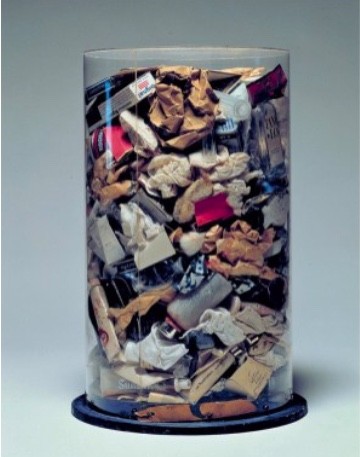

Εικόνα 6: Accumulation of real objects, Arman Fernandez, 1964 | Πηγή εικόνας: armanstudio.com
Εικόνα 7: Fanta-Cola, Cesar Baldaccini, 1989 | Πηγή εικόνας: dorotheum.com
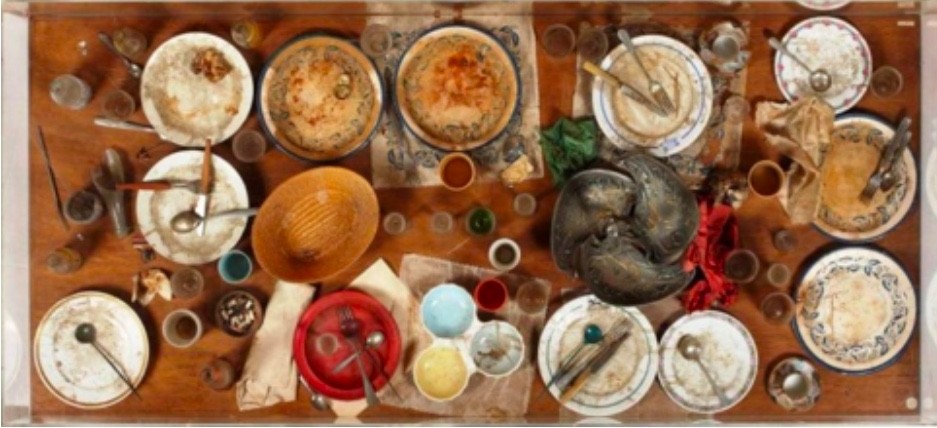
Εικόνα 8: Tableau Piege, circ. 1972, Daniel Spoerri | Πηγή εικόνας: gr.pinterest.com
Ένα από τα πιο σοκαριστικά έργα του 20ού αιώνα είναι η τοποειδής εγκατάσταση του Vince Hannemann, ο οποίος μετέτρεψε την αυλή του στο Τέξας σε έναν “Ναό Σκουπιδιών”, ονομάζοντας έτσι και το έργο του. Από το 1989, κυριολεκτικά χτίζει έναν χώρο προσκυνήματος στα σκουπίδια που ο ίδιος απέρριπτε επί 30 χρόνια. Το κτίσμα είναι εξολοκλήρου κατασκευασμένο από βιομηχανικά παραγόμενα αντικείμενα, που ο καλλιτέχνης ανακύκλωσε για τη δημιουργία δομικών στοιχείων (πχ σκάλες και πόρτες) και για τη διακόσμηση του “ναού”, ο οποίος φτάνει τα 10 μέτρα ύψος, κάνοντας σαφές το πόσο υπερμεγέθης είναι η ατομική -πόσο μάλλον η συλλογική- κατανάλωση σήμερα. (εικ. 9-10)
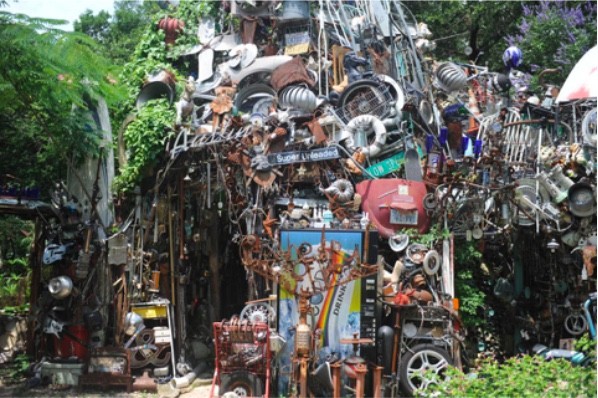
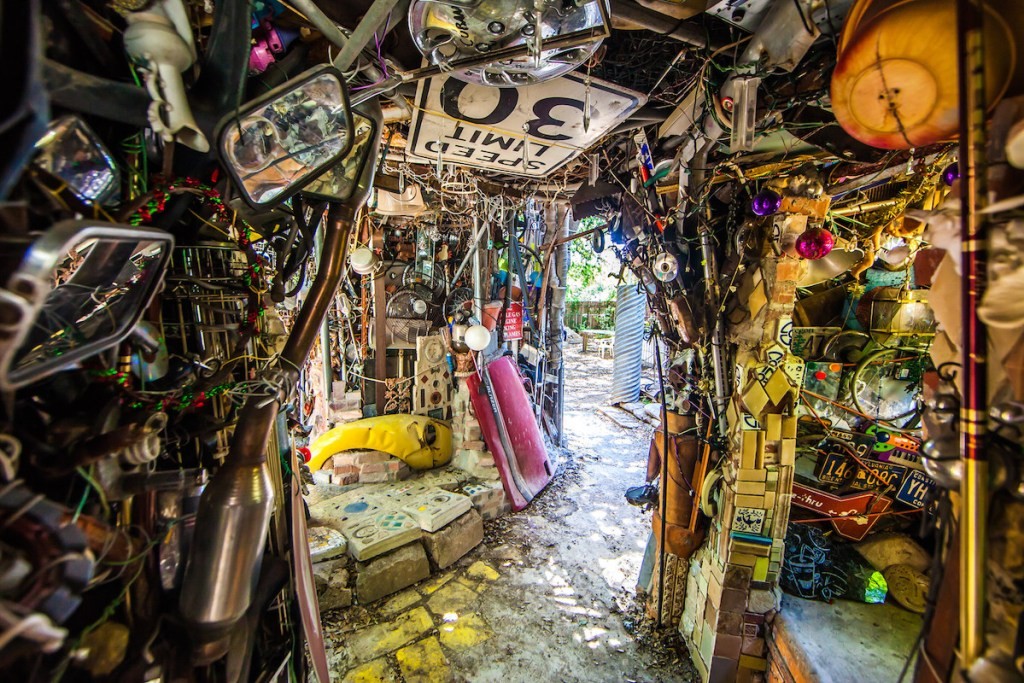
Εικόνες 9-10: “Cathedral of Junk” in Austin, Texas, Vince Hannemann’s. 1989 - Eικόνα: Thomas Hawk | Πηγή εικόνας: thevalemagazine.com
Στον χώρο του Design, η σύγχρονη παραγωγή αφορά όλο και περισσότερο περιβαλλοντολογικά ζητήματα, με στόχο να ευαισθητοποιήσουν το κοινό στην επείγουσα ελαχιστοποίηση της περιβαλλοντολογικής ρύπανσης, αλλά δίνοντας παράλληλα μια νέα αξία και χρήση στα αντικείμενα “μιας χρήσης”. Οι Ολλανδοί Schneemann και van Krimpen δημιούργησαν το περασμένο έτος το 3D project Rudbish, επαναχρησιμοποιώντας σκουπίδια ως ευρήματα και δομικά στοιχεία, σε μια σειρά από έργα που παρουσιάζουν με ωμότητα την υπερκατανάλωση. Όπως λένε, το πρότζεκτ τους “δίνει μια νέα ζωή στο σκουπίδι”, μια θετικότητα, “a positive dish”, ενώ παράλληλα κάνει μια έκκληση για αξιολόγηση της καταναλωτικής μανίας. (εικ.11-12)
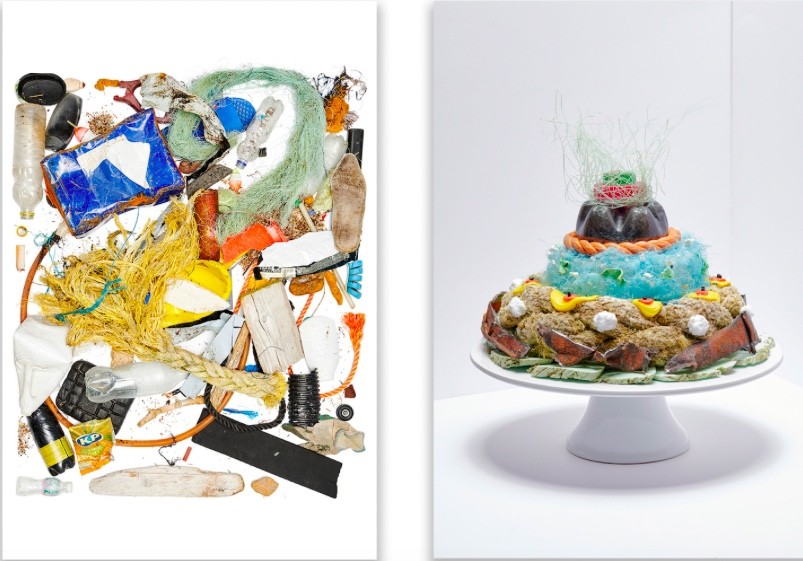
Εικόνα 11-12: Radbish n. 1 | Πηγή εικόνας: damnmagazine.net
Τέλος, είναι σημαντική η αναφορά στη σχεδιαστική ομάδα Messgewand των Romain Coppin και Alexis Bondoux, η οποία, εμπνεόμενη από το σουρεαλιστικό έπιπλο και από τα ready-made έργα, παράγει αντικείμενα μέσω της επανατοποθέτησης του απορρίμματος σε λειτουργία. Δημιουργούν οικιακά αντικείμενα που απαρτίζονται από βιομηχανικά παράγωγα, αλλά τα ίδια δεν είναι βιομηχανικά κατασκευασμένα, κάνοντας πάλι λόγο για τη δημιουργική ανακύκλωση και την καλύτερη διαχείριση των απορριμμάτων, αλλά και για την αξία του εργόχειρου και του συλλεκτικού. (εικ.13)

Εικόνα 13, Coppin and Bondoux, Messgewand's collection | Πηγή εικόνας: dezeen.com
https://en.wikipedia.org/wiki/Arte_Povera
https://www.tate.org.uk/art/art-terms/r/readymade
Η τέχνη από το 1900: μοντερνισμός, αντιμοντερνισμός, μεταμοντερνισμός - Τρίτη αναθεωρημένη. - Αθήνα: Επίκεντρο, 2018





